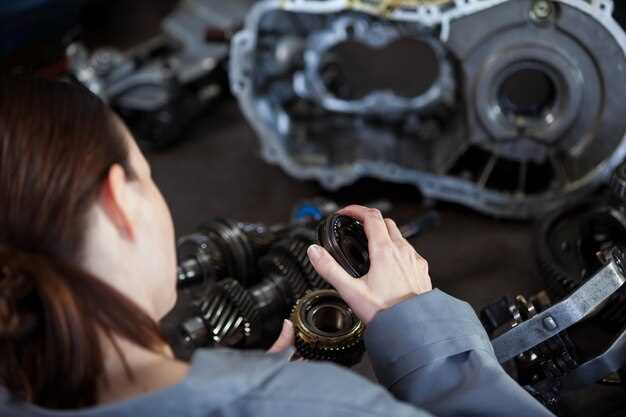
Truck engines are the backbone of the commercial transport industry, providing the power necessary for heavy hauling and long-distance travel. However, like any complex machinery, they are susceptible to a variety of issues that can compromise performance and efficiency. Understanding these common engine problems and their solutions is essential for truck operators and fleet managers alike. By addressing these issues proactively, you can minimize downtime and extend the lifespan of your vehicle.
One of the most frequent problems faced by truck engines is overheating. This can be caused by a range of factors, including insufficient coolant, a malfunctioning thermostat, or a failing water pump. An overheating engine can lead to severe damage if not resolved quickly. Regular maintenance, including checking coolant levels and inspecting the cooling system, can prevent this issue from escalating.
Another prevalent concern is poor fuel efficiency, which can stem from a dirty air filter, malfunctioning fuel injectors, or improper tire pressure. These factors can lead to increased operational costs and reduced productivity. Implementing routine inspections and maintenance schedules can help identify and rectify these inefficiencies, leading to significant savings over time.
This article will delve into these common truck engine issues, outlining not only their symptoms but also effective solutions to tackle them. By equipping yourself with this knowledge, you can ensure that your truck remains in top condition, optimizing performance and minimizing repair costs.
Poor Fuel Efficiency: Identifying Causes and Fixes

Poor fuel efficiency in trucks can significantly impact operational costs and overall performance. Identifying the underlying causes is crucial for implementing effective solutions. Common issues leading to decreased fuel efficiency include engine problems, maintenance neglect, and external factors.
One primary cause is engine inefficiency. An incorrectly tuned engine can lead to incomplete combustion, wasting fuel. Regular tuning, including checking spark plugs, fuel injectors, and air filters, ensures the engine operates at optimal levels.
Dirty air filters restrict airflow to the engine, causing it to work harder and consume more fuel. Replacing air filters regularly can enhance fuel efficiency by allowing for proper airflow. Additionally, low-quality fuel may contain impurities that affect combustion efficiency. Using fuel from reputable sources can mitigate this issue.
Tire condition and pressure also play a significant role. Under-inflated tires increase rolling resistance, leading to higher fuel consumption. Regularly checking and maintaining proper tire pressure is essential for maximizing fuel efficiency. Moreover, ensuring that tires are not worn out will also help in reducing fuel usage.
A poorly functioning transmission can contribute to fuel inefficiency. If the transmission is slipping or not shifting correctly, it may lead to higher engine RPMs and increased fuel consumption. Conducting routine checks and maintenance on the transmission system can help in identifying and rectifying issues early.
Vehicle load affects fuel economy as well. Exceeding weight limits can put extra strain on the engine and increase fuel usage. Regular evaluations of cargo weight and making adjustments to stay within legal limits can help optimize fuel efficiency.
Lastly, driving habits significantly influence fuel economy. Aggressive acceleration, speeding, and excessive idling waste fuel. Training drivers on efficient driving practices can lead to substantial improvements in fuel consumption.
In conclusion, addressing poor fuel efficiency involves a comprehensive approach, focusing on engine performance, maintenance practices, and driving behavior. Implementing these solutions will lead to better fuel economy, reduced costs, and improved overall truck performance.
Overheating Engines: Symptoms and Repair Techniques
Overheating can cause severe damage to truck engines, leading to costly repairs and downtime. Recognizing the symptoms and employing effective repair techniques is crucial for truck maintenance.
Symptoms of Overheating
- Unusual Temperature Gauges: The engine temperature gauge reads higher than normal, often reaching the red zone.
- Steam or Smoke: Visible steam or smoke coming from the engine compartment can indicate overheating.
- Reduced Performance: Loss of power or sluggish acceleration may occur due to engine strain.
- Warning Lights: Dashboard warning lights may illuminate, indicating overheating issues.
- Cooling System Noises: Unusual sounds, such as boiling or hissing from the cooling system, could suggest overheating.
Common Causes of Engine Overheating
- Low Coolant Levels: Insufficient coolant can prevent proper engine temperature regulation.
- Thermostat Failure: A malfunctioning thermostat can restrict coolant flow, leading to overheating.
- Radiator Issues: Blockages or leaks in the radiator can impede heat dissipation.
- Water Pump Failure: A failing water pump can’t circulate coolant effectively, causing heat build-up.
- Clogged Hoses: Obstructions in coolant hoses can also lead to overheating by limiting coolant flow.
Repair Techniques for Overheating Engines
- Check Coolant Levels: Ensure the coolant reservoir is filled to the appropriate level. Add coolant if necessary.
- Inspect the Thermostat: Test the thermostat for proper operation. Replace if it is stuck closed.
- Examine the Radiator: Look for leaks, blockages, or corrosion in the radiator. Perform a flush if clogged.
- Service the Water Pump: Check for leaks and listen for abnormal noises. Replace the water pump if it shows signs of wear.
- Clear Hose Obstructions: Inspect and clean or replace any clogged coolant hoses to ensure smooth coolant flow.
Preventive Measures
- Regularly check coolant levels and top up as needed.
- Perform routine maintenance on cooling system components.
- Monitor temperature gauges during operation.
- Address any warning lights promptly to prevent further issues.
- Ensure adequate airflow to the radiator by checking for debris and damage.
By understanding the symptoms and employing effective repair techniques, truck owners can mitigate overheating issues and maintain engine health.
Starting Problems: Troubleshooting Common Electrical Issues

Starting issues in trucks are often linked to electrical components. Identifying these problems promptly can prevent further complications. Here are common electrical issues and their potential solutions:
1. Battery Problems: The battery is fundamental for starting. A battery that is weak, corroded, or poorly connected can lead to failure. Solution: Check the battery voltage with a multimeter. Clean corroded terminals and ensure all connections are tight. If the battery is older than three years or shows low voltage, consider replacement.
2. Starter Motor Failure: A malfunctioning starter motor may not engage when the ignition is turned on. Signs include a clicking noise or no sound at all. Solution: Test the starter by bypassing the ignition circuit using a remote starter switch. If it operates, the issue lies within the ignition system or wiring.
3. Ignition Switch Issues: A faulty ignition switch can disrupt the starting circuit, preventing the truck from starting. If lights and radio turn on but the engine doesn’t crank, the ignition switch may be defective. Solution: Inspect the ignition switch for wear or damage. Replacing it if necessary can often resolve starting issues.
4. Faulty Alternator: A bad alternator may not charge the battery properly, leading to starting problems. If the battery dies shortly after a recharge, the alternator could be the culprit. Solution: Test the alternator output with a multimeter. If it doesn’t produce sufficient voltage, replacement is recommended.
5. Blown Fuses or Relays: Fuses or relays related to the starting system can blow due to electrical spikes. This results in incomplete circuits. Solution: Inspect the fuse box for blown fuses and test relays for continuity. Replace any defective components to restore proper function.
By systematically assessing these electrical components, truck owners can pinpoint the cause of starting issues and implement effective solutions. Prompt attention to these problems can enhance vehicle reliability and longevity.




